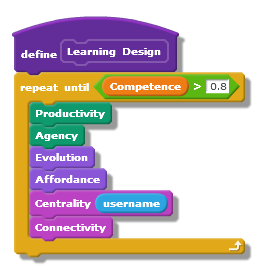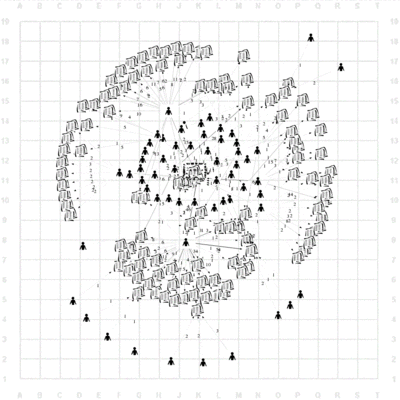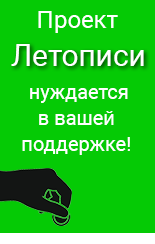English version
(→LETOPISI.ORG - creative and exploratory cycles) |
|||
| (не показаны 22 промежуточные версии 1 участника) | |||
| Строка 1: | Строка 1: | ||
__NOTOC__ | __NOTOC__ | ||
| + | |||
| + | == LETOPISI.ORG - Standards & Tools & Learning Practices == | ||
| + | * ASK: [[:Category:ISTE_Standards ]] + Language_Ru_Eng = English | ||
| + | * ASK: [[:Category:Язык программирования ]] + Сфера деятельности = Global_Collaborator | ||
| + | * ASK: [[:Category:Сценарий образовательной практики ]] | ||
| Строка 8: | Строка 13: | ||
Initially the network Letopisi.org was regarded as a field for creative productive learning where learners create common stories about their teachers, schools and cities. As a medium for collaboration at the start of the project in 2006 we chose wiki. The majority of wiki software (also known as a wiki engine) is free and open source software and is developed collaboratively. MediaWiki is the most popular of these and is also used to run Wikipedia, the world's largest online encyclopedia, as well as many other (non-profit) educational projects. | Initially the network Letopisi.org was regarded as a field for creative productive learning where learners create common stories about their teachers, schools and cities. As a medium for collaboration at the start of the project in 2006 we chose wiki. The majority of wiki software (also known as a wiki engine) is free and open source software and is developed collaboratively. MediaWiki is the most popular of these and is also used to run Wikipedia, the world's largest online encyclopedia, as well as many other (non-profit) educational projects. | ||
| − | We draw attention to the fact that wiki is a very simple and very quick way to create and deploy a new page in the network. In the same time attention falls from the area that it strengthens with the interaction of wiki pages and the collaborative efforts. What has been created by one person, can be further used by other people. We can collect articles from the finished blocks, the same way as the program collects from Lego blocks. | + | We draw attention to the fact that wiki is a very simple and very quick way to create and deploy a new page in the network. In the same time attention falls from the area that it strengthens with the interaction of wiki pages and the collaborative efforts. What has been created by one person, can be further used by other people. We can collect articles from the finished blocks, the same way as the program collects from Lego or [[Scratch]] blocks. |
| + | |||
| + | [[Файл:Ped construct engl.png]] | ||
| + | |||
| + | Scratch blocks or a Wiki article are useful and powerful not because they are simple but because they determined the exact template, and they are always compatible with each other. Thanks to the template and transclusion mechanism, with MediaWiki it is possible to use articles as "building bricks" and from these we can assemble larger "building blocks" | ||
| + | |||
| + | |||
In Russian education MediaWiki is represented first of all by Letopisi.org project and its regional clones in several teaching colleges and universities. Letopisi - http://Letopisi.org is the national educational project with international participation and has continued for more than ten years. | In Russian education MediaWiki is represented first of all by Letopisi.org project and its regional clones in several teaching colleges and universities. Letopisi - http://Letopisi.org is the national educational project with international participation and has continued for more than ten years. | ||
| Строка 21: | Строка 32: | ||
Each page among working tabs has a wikigram tab. By clicking this tab a user opens a special page where [[Graphviz]] creates a bipartite graph – wikigram. Each page among working tabs has a wikigram tab. By clicking this tab a user opens a special page where Graphviz creates a bipartite graph – wikigram. A wikigram is automatically built not only for a separate page, but for groups of pages under one category. | Each page among working tabs has a wikigram tab. By clicking this tab a user opens a special page where [[Graphviz]] creates a bipartite graph – wikigram. Each page among working tabs has a wikigram tab. By clicking this tab a user opens a special page where Graphviz creates a bipartite graph – wikigram. A wikigram is automatically built not only for a separate page, but for groups of pages under one category. | ||
| − | Any participant can take graphs initial text and use it for personal experiments on a separate designated page. The next possible task is connected with the comparison and evaluation of wikigrams of different categories. To make it easier for teachers and students to compare and evaluate wikigrams we have created evaluation criteria shown in a table | + | Any participant can take graphs initial text and use it for personal experiments on a separate designated page. The next possible task is connected with the comparison and evaluation of wikigrams of different categories. To make it easier for teachers and students to compare and evaluate wikigrams we have created evaluation criteria shown in a table 1 |
[[Файл:Ubi go ban3.gif|400px|]] | [[Файл:Ubi go ban3.gif|400px|]] | ||
| + | [[Wikigram]] in letopisi is alike [[Scratch Community Blocks]] constructor | ||
| + | |||
| + | === Table 1 === | ||
{| {{prettytable}} | {| {{prettytable}} | ||
|- | |- | ||
| Строка 54: | Строка 68: | ||
| Cohesion | | Cohesion | ||
| A wikigram depicts one cohesive clique, in which all the participants are connected to each other via pages. | | A wikigram depicts one cohesive clique, in which all the participants are connected to each other via pages. | ||
| − | | | + | | Participants form several small groups. |
| There are no groups on the wikigram which proves lack of interaction. | | There are no groups on the wikigram which proves lack of interaction. | ||
|- | |- | ||
| Строка 66: | Строка 80: | ||
; You can read more about Letopisi aprroach in [http://www.uic.unn.ru/pustyn/papers/patarakin_chap_levin%202017.pdf Wikigrams-Based Social Inquiry] chapter | ; You can read more about Letopisi aprroach in [http://www.uic.unn.ru/pustyn/papers/patarakin_chap_levin%202017.pdf Wikigrams-Based Social Inquiry] chapter | ||
| − | : Patarakin, E. D. (2017). Wikigrams-Based Social Inquiry. // Digital Tools and Solutions for Inquiry-Based STEM Learning (Т. 1, | + | : Patarakin, E. D. (2017). Wikigrams-Based Social Inquiry. // Digital Tools and Solutions for Inquiry-Based STEM Learning (Т. 1, pp. 112–138). IGI Global URL:http://www.igi-global.com/chapter/wikigrams-based-social-inquiry/180861 |
Текущая версия на 10:16, 26 февраля 2019
[править] LETOPISI.ORG - Standards & Tools & Learning Practices
- ASK: Category:ISTE_Standards + Language_Ru_Eng = English
- ASK: Category:Язык программирования + Сфера деятельности = Global_Collaborator
- ASK: Category:Сценарий образовательной практики
[править] LETOPISI.ORG - creative and exploratory cycles
To be successful in the 21st century, students must have a fundamental knowledge of complex networks which allows them to explore the interconnectedness of our world. Networks are pervasive across all aspects of life: biological, physical, economic, and social and our society continues to become ever more connected through the use of social medWe assume that introducing students and teachers to the network science may begin with mapping their own activities in the networked communities. The advantage of this approach is a network lens is used to understand situations in which students and teachers are drawn into. Consequently the network science shows its strength in the areas of immediate experience and students and teachers become researchers of their own activity.ia tools.
Initially the network Letopisi.org was regarded as a field for creative productive learning where learners create common stories about their teachers, schools and cities. As a medium for collaboration at the start of the project in 2006 we chose wiki. The majority of wiki software (also known as a wiki engine) is free and open source software and is developed collaboratively. MediaWiki is the most popular of these and is also used to run Wikipedia, the world's largest online encyclopedia, as well as many other (non-profit) educational projects.
We draw attention to the fact that wiki is a very simple and very quick way to create and deploy a new page in the network. In the same time attention falls from the area that it strengthens with the interaction of wiki pages and the collaborative efforts. What has been created by one person, can be further used by other people. We can collect articles from the finished blocks, the same way as the program collects from Lego or Scratch blocks.
Scratch blocks or a Wiki article are useful and powerful not because they are simple but because they determined the exact template, and they are always compatible with each other. Thanks to the template and transclusion mechanism, with MediaWiki it is possible to use articles as "building bricks" and from these we can assemble larger "building blocks"
In Russian education MediaWiki is represented first of all by Letopisi.org project and its regional clones in several teaching colleges and universities. Letopisi - http://Letopisi.org is the national educational project with international participation and has continued for more than ten years.
Currently Letopisi.org is a huge multimedia archive and an experimental site, where everyone can find useful information and make an experiment with modern methods of collective storage, retrieval, editing and classification of texts, photos, audio, video. The leading idea of the Letopisi concept is that the collaborative network activity and the network cooperation of the learning agents are aimed at the creation of various types of learning products which in general could be marked by a widely recognized term “digital story”.
In the Letopisi.org Social Learning Network students perform the following actions with wiki pages: Read -> Create -> Edit -> Connect -> Share -> Read
We have created a simple application for social network analysis that help to detect and visualize cliques of densely connected articles and editors in wiki - Collaboration Diagram or WikiGram - https://www.mediawiki.org/wiki/Extension:Collaboration_Diagram
The use of wikigrams allows us to conduct express analysis of the position at the field of the collaborative network activity, to determine the key units of the position – authors and articles, with which the majority of other units are linked, to evaluate the stability of a community according to the number of authors involved into collaborative editing of the collaborative pages. Each page among working tabs has a wikigram tab. By clicking this tab a user opens a special page where Graphviz creates a bipartite graph – wikigram. Each page among working tabs has a wikigram tab. By clicking this tab a user opens a special page where Graphviz creates a bipartite graph – wikigram. A wikigram is automatically built not only for a separate page, but for groups of pages under one category.
Any participant can take graphs initial text and use it for personal experiments on a separate designated page. The next possible task is connected with the comparison and evaluation of wikigrams of different categories. To make it easier for teachers and students to compare and evaluate wikigrams we have created evaluation criteria shown in a table 1
Wikigram in letopisi is alike Scratch Community Blocks constructor
[править] Table 1
| Criterion | High level | Medium level | Low level |
|---|---|---|---|
| Productivity | A wikigram contains a variety of objects created by participants. | Participants have created digital objects. The number of objects is approximately equal to the number of participants. | In the project very few digital objects have been created. The number of objects is much fewer than the number of participants. |
| Action frequency | A graph shows that objects have been modified frequently (more than 5 times) by authors and editors | Some objects have been enhanced by the authors and other participants 3-4 times. | Objects created by participants have never been altered since being created and published in the system. |
| Connectedness | All actors and objects are connected in one graph. | Participants and objects are connected into small groups of components (3-4). | The graph of the project is broken into a number of non-connected components. |
| Cohesion | A wikigram depicts one cohesive clique, in which all the participants are connected to each other via pages. | Participants form several small groups. | There are no groups on the wikigram which proves lack of interaction. |
| Stability | A wikigram shows several key players, whose linking provides stability for collaboration. | A wikigram contains 2-3 main players, whose removal will lead to breaking the net into separate components | A wikigram has one key player in charge of all informational processes. Removal of this unit terminates the net. |
- You can read more about Letopisi aprroach in Wikigrams-Based Social Inquiry chapter
- Patarakin, E. D. (2017). Wikigrams-Based Social Inquiry. // Digital Tools and Solutions for Inquiry-Based STEM Learning (Т. 1, pp. 112–138). IGI Global URL:http://www.igi-global.com/chapter/wikigrams-based-social-inquiry/180861
____
Letopisi.ru for English language K-12 teachers
[править] Letopisi.ru interface settings for international users
The default interface for letopisi.ru is Russian, so, if you need to change it into English, or any other language, you need to come to preferences page and change Ru - русский (Ru - russian) to other language (ex. en - english, af - africaans, it - italiano, etc.)
You are welcome!


